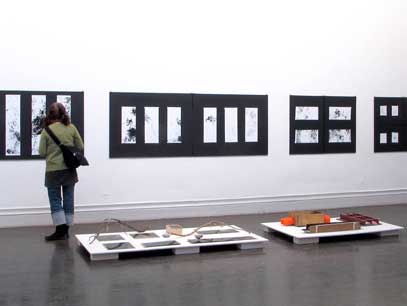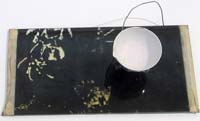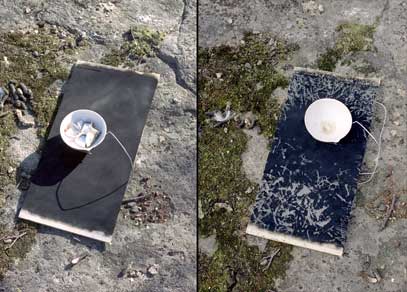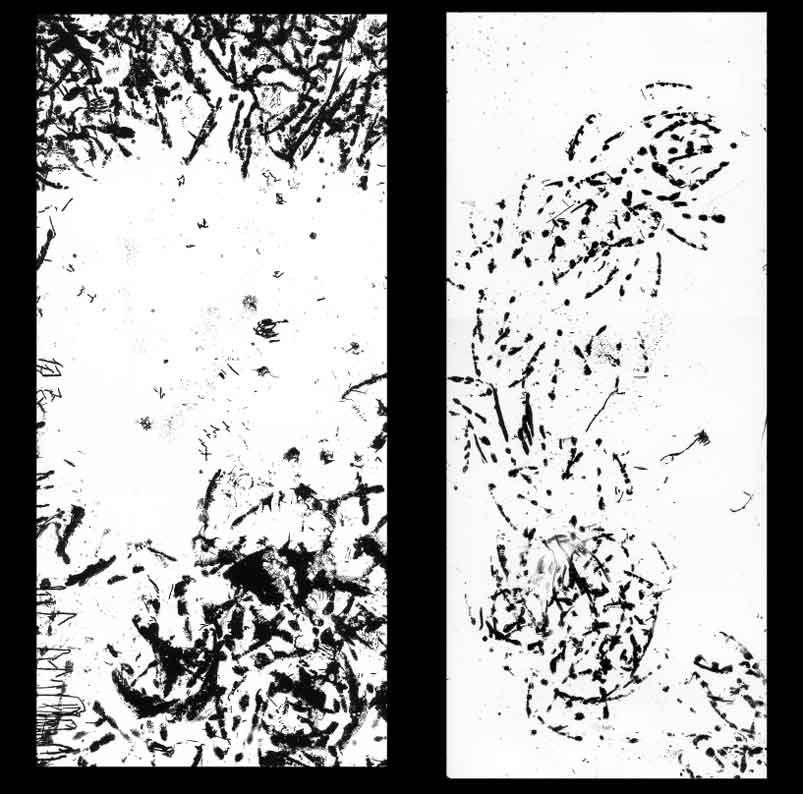
TRACING ANIMALS
 Plenty of animals that share the landscape with us manage to move around unnoticed, as if they were invisible to us - unless we come across them by accident. Some animals move at night-time and the only way to observe them is learning to read different traces they leave behind them. In winter, snow is the perfect surface for capturing imprints but my aim was to create new visual techniques for registering animal movement.
Plenty of animals that share the landscape with us manage to move around unnoticed, as if they were invisible to us - unless we come across them by accident. Some animals move at night-time and the only way to observe them is learning to read different traces they leave behind them. In winter, snow is the perfect surface for capturing imprints but my aim was to create new visual techniques for registering animal movement.
I designed and built some simple devices and placed them in the terrain. They are a kind of traps - although they neither catch nor harm animals in any way. Using baits, I attracted animals to walk across a soot-covered plate of glass - or a white sheet of paper with a colour threshold. Any movement was imprinted on the surface, making the choreography visible. The animals themselves remained invisible but their movement was documented step by step - thus giving us clues as to the size, rhythm and direction
of the passers-by.
When animal imprints are displayed in an arts context, they can be interpreted as paintings through our visual tradition: any spectator will be able to recognize calligraphy, pointillism or abstract expressionism in the steps of a mole. Although the arts context may add spice to Tracing Animals, I am mostly hoping to offer a new way of looking at the landscape. With the help of the imprints, those hidden small creatures
can emerge from the shadows.
 Tracing Animals - Seagull traps
Tracing Animals - Seagull traps
See more images of the project:
